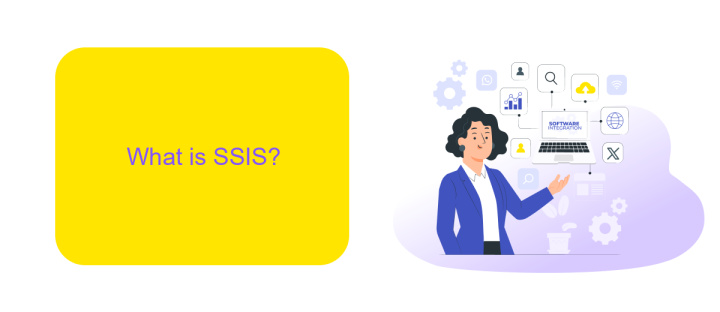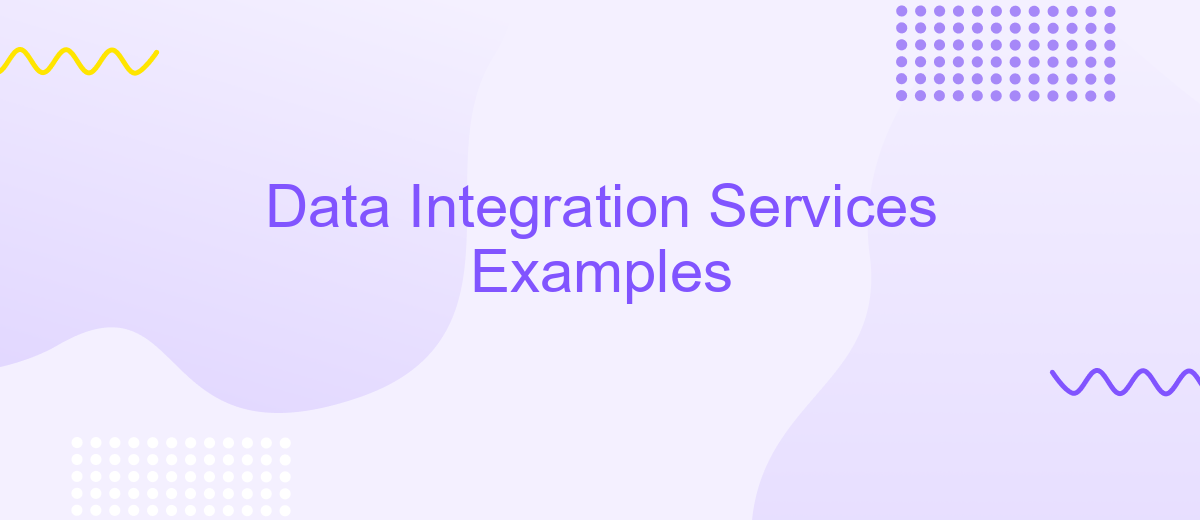Data Integration Services Examples
Data integration services are essential for businesses seeking to streamline operations and enhance decision-making processes. By consolidating data from various sources into a unified view, these services enable organizations to efficiently manage and utilize their information assets. This article explores several examples of data integration services, highlighting their key features and benefits to help you choose the right solution for your needs.
Introduction
Data integration services play a crucial role in modern businesses by enabling seamless connection and communication between various data sources. These services help organizations to consolidate data from multiple platforms, ensuring that information is accurate, up-to-date, and easily accessible. By leveraging data integration, companies can improve decision-making, enhance productivity, and maintain a competitive edge.
- Streamline data from different sources
- Ensure data consistency and accuracy
- Facilitate real-time data access and analysis
- Enhance operational efficiency
- Support scalable data management solutions
One of the prominent tools in this domain is ApiX-Drive, a service that simplifies the process of integrating various applications and data sources. With its user-friendly interface and robust features, ApiX-Drive allows businesses to automate workflows, reduce manual data entry, and ensure seamless data synchronization. By utilizing such integration services, organizations can focus more on strategic initiatives rather than dealing with data silos and inconsistencies.
What is SSIS?

SQL Server Integration Services (SSIS) is a powerful data integration tool provided by Microsoft. It is part of the Microsoft SQL Server database software and is used for a wide range of data migration and ETL (Extract, Transform, Load) operations. SSIS enables users to extract data from various sources, transform it according to business rules, and load it into a destination database. The tool supports a variety of data sources, including SQL databases, Excel files, and flat files, making it versatile for complex data integration tasks.
SSIS offers a user-friendly interface with a drag-and-drop feature for creating data workflows, which simplifies the process of building and managing data integration solutions. It also includes built-in tasks and transformations that can handle data cleansing, aggregation, and merging. For businesses looking for more automated and efficient data integration solutions, services like ApiX-Drive can complement SSIS by providing easy-to-use integrations and automation between various applications without the need for extensive coding or manual intervention.
Why use SSIS?

SQL Server Integration Services (SSIS) is a powerful tool for data integration and workflow applications. It allows businesses to manage and automate data movement between various sources and destinations, ensuring data consistency and accuracy.
- Efficiency: SSIS provides high-speed data integration capabilities, reducing the time needed to process large volumes of data.
- Scalability: Whether you are handling gigabytes or terabytes of data, SSIS can scale to meet your needs.
- Flexibility: It supports a wide range of data sources and destinations, including databases, flat files, and cloud services.
- Automation: With features like scheduled tasks and event-driven workflows, SSIS helps automate repetitive data processes.
- Data Transformation: SSIS offers robust tools for data cleansing, aggregation, and transformation, ensuring your data is ready for analysis.
In addition to SSIS, services like ApiX-Drive can further streamline the integration process by providing easy-to-use interfaces and pre-built connectors for various applications. This combination of tools ensures seamless data flow and integration, enhancing overall business efficiency and decision-making.
How to use SSIS

SQL Server Integration Services (SSIS) is a powerful tool for data integration and workflow applications. To get started, you need to install SQL Server Data Tools (SSDT) which includes SSIS. Once installed, launch SSDT and create a new SSIS project.
First, you need to define the data sources and destinations. SSIS supports various data sources such as SQL Server, Oracle, and flat files. Use the Connection Managers to set up these connections. Next, create a Data Flow Task where you will define how data moves from source to destination.
- Drag and drop data flow components like OLE DB Source and OLE DB Destination.
- Configure the components to specify the source and destination tables.
- Use transformations like Lookup, Merge, and Aggregate to manipulate data.
- Run the package to execute the data flow.
For more advanced integrations, consider using services like ApiX-Drive. ApiX-Drive can automate data transfer between various platforms, making SSIS workflows more efficient. By combining SSIS with ApiX-Drive, you can achieve seamless and automated data integration across multiple systems.
- Automate the work of an online store or landing
- Empower through integration
- Don't spend money on programmers and integrators
- Save time by automating routine tasks
Examples of SSIS
SQL Server Integration Services (SSIS) is a powerful tool used for data integration and workflow applications. One common example of SSIS in action is its use in ETL (Extract, Transform, Load) processes. For instance, a company may use SSIS to extract data from various sources such as SQL databases, Excel files, and flat files. This data is then transformed through various operations like data cleansing, merging, and aggregation before being loaded into a data warehouse. This process ensures that the data is accurate, consistent, and ready for analysis.
Another example of SSIS is its role in automating data migration tasks. Companies often need to migrate data from legacy systems to newer applications. SSIS can be configured to handle these migrations efficiently by scheduling packages that run at specific intervals. Additionally, SSIS can be integrated with services like ApiX-Drive to automate and streamline data integration workflows further. ApiX-Drive allows businesses to connect various applications and services without the need for extensive coding, making the entire process more efficient and less prone to errors.
FAQ
What is data integration and why is it important?
Can data integration services help with automating workflows?
How does ApiX-Drive facilitate data integration?
What types of data sources can be integrated using ApiX-Drive?
Is it possible to set up custom integrations with ApiX-Drive?
Time is the most valuable resource in today's business realities. By eliminating the routine from work processes, you will get more opportunities to implement the most daring plans and ideas. Choose – you can continue to waste time, money and nerves on inefficient solutions, or you can use ApiX-Drive, automating work processes and achieving results with minimal investment of money, effort and human resources.


